
The Boardman House, also known as the Scotch-Boardman House or the Bennett-Boardman House, is a historic house located at 17 Howard Street, Saugus, Massachusetts. Built in 1692, it was designated a National Historic Landmark in 1961 because of the remarkable amount of original building material still present in the house. It has been owned by Historic New England since 1914, and is open to the public on select weekends between June and October.

The Old Ship Church is a Puritan church built in 1681 in Hingham, Massachusetts. It is the only surviving 17th-century Puritan meetinghouse in the United States. Its congregation, gathered in 1635 and officially known as First Parish in Hingham, occupies the oldest church building in continuous ecclesiastical use in the country. On October 9, 1960, it was designated a National Historic Landmark, and on November 15, 1966, it was added to the National Register of Historic Places.

The Cambridge Common Historic District is a historic district encompassing one of the oldest parts of Cambridge, Massachusetts. It is centered on the Cambridge Common, which was a center of civic activity in Cambridge after its founding in 1631. It was the site of the election for governor of the Massachusetts Bay Colony in 1636, and was a military barracks site during the American Revolutionary War. The common was gradually reduced in size to its present roughly triangular shape, and surrounded by buildings in the 18th and 19th centuries. In 1973 a historic district encompassing the extant common and everything within 100 feet (30 m) of it was listed on the National Register of Historic Places. In 1987 the district was amended to rationalize the boundary, which overlapped adjacent districts and included portions of some buildings.
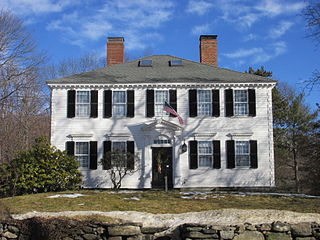
The First Minister's House is a historic house at 186 Elm Street in Gardner, Massachusetts. The house was built in 1792 and served as the church parsonage for Rev. Jonathan Osgood, pastor of Gardner's First Congregational church and also a physician. It is one of Gardner's finest examples of late Georgian architecture. It was added to the National Register of Historic Places in 1979, and included in the Gardner Uptown Historic District in 1999.
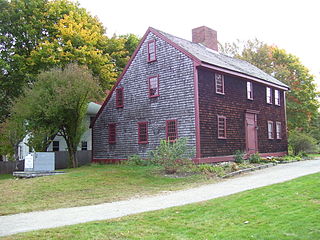
The Parker Tavern is a historic house museum in Reading, Massachusetts, United States. Built in 1694, it is the oldest extant structure in Reading. The saltbox was built by Abraham Bryant, a farmer and blacksmith, and Ephraim Parker operated a tavern on the premises in the 18th century. It has been a local history museum since 1923, and was listed on the National Register of Historic Places in 1975.

The Old Town Historic District is a historic district in North Attleborough, Massachusetts, which encompasses the historic early town center of Attleboro, which it was originally a part of. It was here that Attleboro's first church was built, and its militia training ground was laid out. The district retains 18th-century vestiges of this early history, and was largely bypassed by 19th-century industrialization. The district was added to the National Register of Historic Places in 1991.
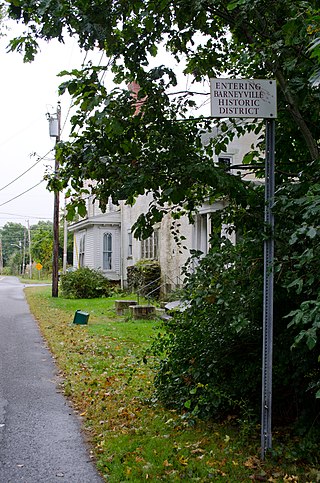
The Barneyville Historic District is a predominantly residential historic district on Old Providence and Barneyville Roads in northwestern Swansea, Massachusetts. The area was the site of a successful shipbuilding operation during the early 19th century, and then became a local center for jewelry making. The district was added to the National Register of Historic Places in 1990.
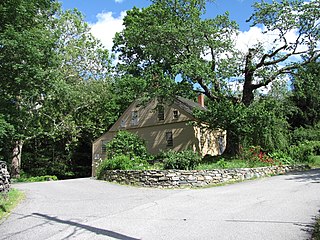
The Freegrace Marble Farm Historic District encompasses a historic farmstead in Sutton, Massachusetts. Although most of its buildings date to the 19th century, the farm has retained the form of a typical 18th-century farm, including a substantial portion of the land granted in 1717 to Freegrace Marble, one of Sutton's earliest colonial settlers. The property was listed on the National Register of Historic Places in 1989.

The Townsend House is a historic house at 290 Paine Hollow Road in Wellfleet, Massachusetts. The 1+1⁄2-story full Cape style wood-frame house was built in 1804, probably by Doctor James Townsend, whose descendants owned the house well into the 20th century. The most notable resident was Samuel Campbell, an English engineer who worked with Guglielmo Marconi on the transatlantic wireless facilities in Wellfleet. The house is notable as a particularly little-altered example of the style, with details typically only found in houses of wealthier owners. The house was listed on the National Register of Historic Places in 1998.
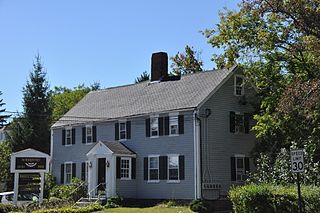
The Benjamin Coker House is a historic First Period house in Newburyport, Massachusetts. The oldest portion of the house, the central chimney and the rooms to its left, were built c. 1700 on a site at the corner of High and Federal Streets. The building was widened in the mid 18th century, adding the rooms to the right. The building was moved to its present location in 1856, and enlarged with a two-story addition on the rear. It underwent a major rehabilitation in 1989, but retains some mid 18th century decorative details.

The William Murray House is a historic First Period house on the east side of Salem, Massachusetts. It is a two-story wood-frame house that consists of two distinct sections that have not always been treated as a single unit. Its construction history provides a window into 17th and 18th century building methods. The westernmost section was built c. 1688, and is three window bays wide and a single room in depth. The eastern section, also three bays wide and one room deep, was added in the late 17th or early 18th century. The western portion originally had an overhanging section of the second floor; this was altered in the early 18th century, when the roof was raised to a flatter pitch and the overhanging section was concealed by construction of a flush wall.

The Abiel Stevens House is a historic First-Period house in North Andover, Massachusetts. The 2+1⁄2-story wood-frame house is unusual for retaining its basic 18th century form with minimal alteration. The house was built in 1710 by Abiel Stevens, one of Andover's early major landowners. The major alterations since Stevens built the house include a late 18th-century lean-to added to the back of the house, and the front porch, which dates to the same time.
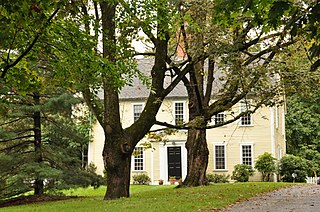
The Rev. Samuel Woodward House is a historic house located at 19 Concord Road in Weston, Massachusetts. Built in 1753, it is a well-preserved example of mid-18th century Georgian architecture. It has also been home to a succession of people significant to the history of the town. It was listed on the National Register of Historic Places in 1976, and was included in Weston's Boston Post Road Historic District in 1983.

The Church–Lafayette Streets Historic District encompasses a well-preserved collection of late 18th- and early 19th-century houses in Wakefield, Massachusetts. It includes properties on Church Street between Common Street and North Avenue, and on Lafayette Street between Common and Church Streets. The district was added to the National Register of Historic Places in 1989.

The John Hendricks House and Dutch Barn is located along Old Post Road in Staatsburg, New York. It is a late-18th-century stone house that once served as an inn along the Albany Post Road.

The New Preston Hill Historic District encompasses a small rural 19th-century village center in the New Preston area of the town of Washington, in Litchfield County, Connecticut. Settled in the late 18th century, it is distinctive for its examples of stone architecture, include a rare Federal period stone church. The district, located at the junction of New Preston Road with Gunn Hill and Findlay Roads, was listed on the National Register of Historic Places in 1985.
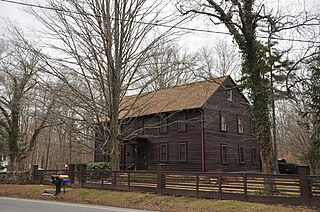
The Eleazer Williams House is a historic house in Mansfield Center, Connecticut, United States. It is located on Storrs Road near the southeast corner of the junction with Dodd Road. Completed in 1710, it was the home of the town's first minister and has a well-preserved chronology of alteration, illustrating changing building practices over the 18th century. The house was listed on the National Register of Historic Places in 1971 and is included within the Mansfield Center Historic District.

The Oliver House, also known as the Smith-Oliver House, is a historic house at 58 Oak Street in Wakefield, Massachusetts. Probably built in the late 18th century, this Federal period house is distinctive for its association with the now-suburban area's agrarian past, and as a two-family residence of the period, with two "Beverly jogs". The house was listed on the National Register of Historic Places in 2014.

The Drewsville Mansion is a historic house on Old Cheshire Turnpike in the Drewsville village of Walpole, New Hampshire, United States. Built in 1880, it is a regionally rare example of vernacular Stick/Eastlake style architecture, located in an area that has predominantly even older buildings. The building was listed on the National Register of Historic Places in 1996.

The Exeter Waterfront Commercial Historic District encompasses the historic commercial and residential waterfront areas of Exeter, New Hampshire. The district extends along the north side of Water Street, roughly from Main Street to Front Street, and then along both sides of Water and High streets to the latter's junction with Portsmouth Street. It also includes properties on Chestnut Street on the north side of the Squamscott River. This area was where the early settlement of Exeter took place in 1638, and soon developed as a shipbuilding center. The district was listed on the National Register of Historic Places in 1980. It was enlarged in 1986 to include the mill complex of the Exeter Manufacturing Company on Chestnut Street.























